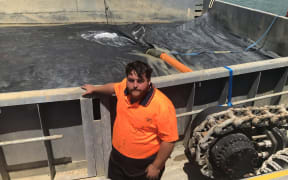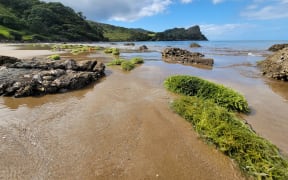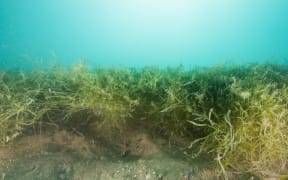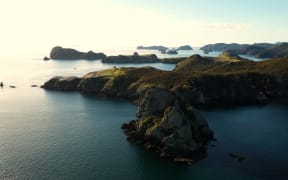
The Johnson Brothers suction dredge in action at Omākiwi Cove, near Rāwhiti in the Bay of Islands. Photo: RNZ / Peter de Graaf
Imagine the world's biggest wet vacuum cleaner with a nozzle the size of a small car and a bag with a 250-tonne capacity.
That, more or less, is what is being trialled in the Bay of Islands.
The locally-designed-and-built suction dredge is the newest weapon in the battle against caulerpa, an exotic seaweed that has been described as the world's worst marine pest.
So far it has been found off Aotea Great Barrier, Waiheke Island, and a reef near Kawau Island, but the thickest infestations are at Rāwhiti in the Bay of Islands.
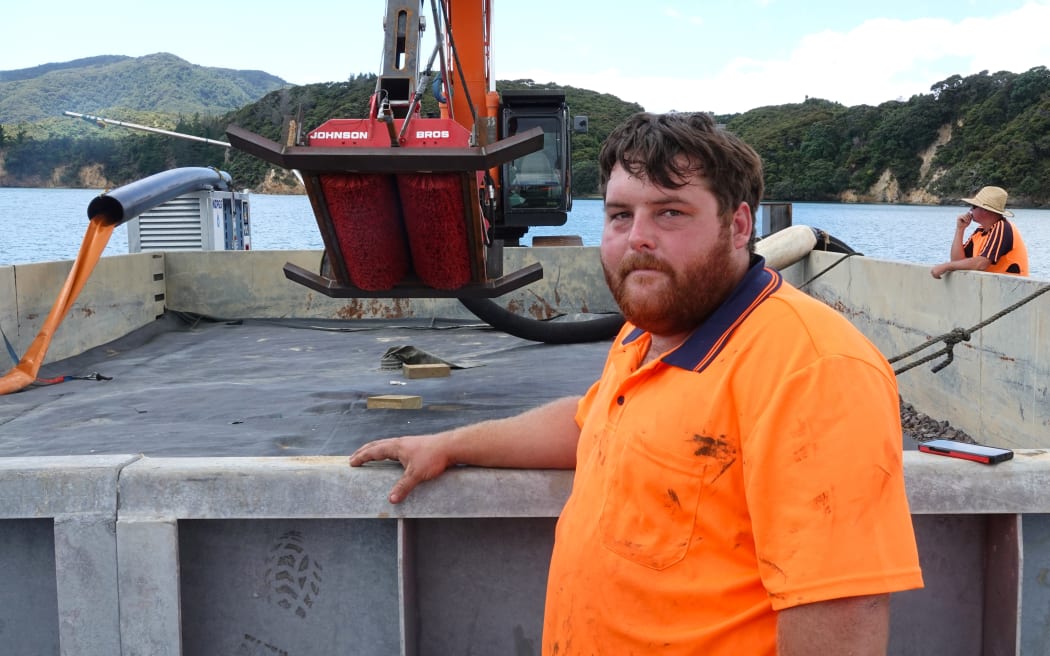
Andrew Johnson, of Russell firm Johnson Brothers, with the caulerpa suction dredge he designed and built. Photo: RNZ / Peter de Graaf
In North America and the Mediterranean, the fast-growing invader has drastically reduced biodiversity, slashed fish stocks and choked shellfish beds.
The fear is it will do the same in northern New Zealand.
Northland Regional Council marine biosecurity manager Kaeden Leonard said caulerpa had the ability to grow quickly and form a monoculture that smothered anything in its path, outcompeting and displacing native species
Existing control strategies included placing mats on top of infestations, dosing it with chlorine, or sending in divers with suction hoses, but those methods were slow and labour-intensive.
A suction dredge built by Russell marine company Johnson Brothers should remove as much caulerpa in minutes as a diver could in a day.
Trials of the dredge started last week at Omākiwi Cove, ground zero of the Northland infestation.
Leonard said he had not seen anything like it before.
"It's definitely a New Zealand first, and most likely a world first. It's really scaling up what we've been able to do in the past. We've been able to get in there with diver-assisted suction hoses, but this is a mechanical approach."
Once the trial was complete, divers would study the area to make sure the caulerpa had been thoroughly removed, damage to the seafloor was minimal, and the seaweed pest did not come straight back.
Leonard said the signs so far were good.
"It's very, very, very promising. We've all been encouraged by the initial testing. It is able to get through a large area and really take that above-ground biomass and the below-ground rhizomes or root system, stopping its ability to regrow," he said.
Johnson Brothers founder Andrew Johnson said he was not immediately convinced of the seriousness of the problem, until he took a look for himself.
"When I dived on it and had a look, I could see it actually is a real problem. When you have a mat that completely covers the benthic environment, that's up to a metre deep in some locations, there's no way anything under that can survive."
Johnson, 30, said it felt good to be part of a local solution to a local problem - especially when the infestation site was one of the very places he learned to dive for scallops as a youngster.
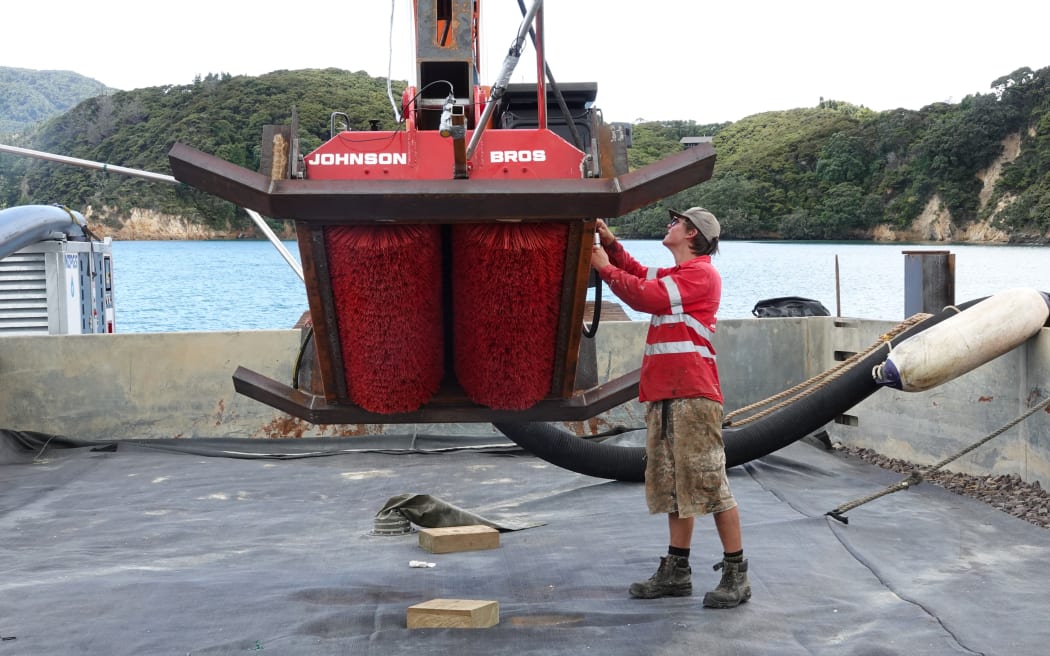
Johnson Brothers marine apprentice William Scott from Ōpua checks the dredge head. Photo: RNZ / Peter de Graaf
The dredge used a pair of counter-rotating road sweeper brushes to break up the seaweed and its roots, which were then sucked up through an eight-inch hose by a pump with a capacity of 400 cubic metres per hour.
The caulerpa ended up in a dewatering bag which allowed seawater to drain out while the plant material was trapped inside.
The barge could carry about 250 tonnes before it had to be emptied.
Johnson said biosecurity regulations meant the caulerpa could not be transported out of the area, so it was buried in a bunded area set back from the beach.
In future he hoped it could be put to use, for example for producing fertiliser.
Among those watching the trial last week was Biosecurity New Zealand readiness and response director John Walsh.
He said the two-hectare, $650,000 trial was run by Northland Regional Council but funded by Biosecurity NZ.
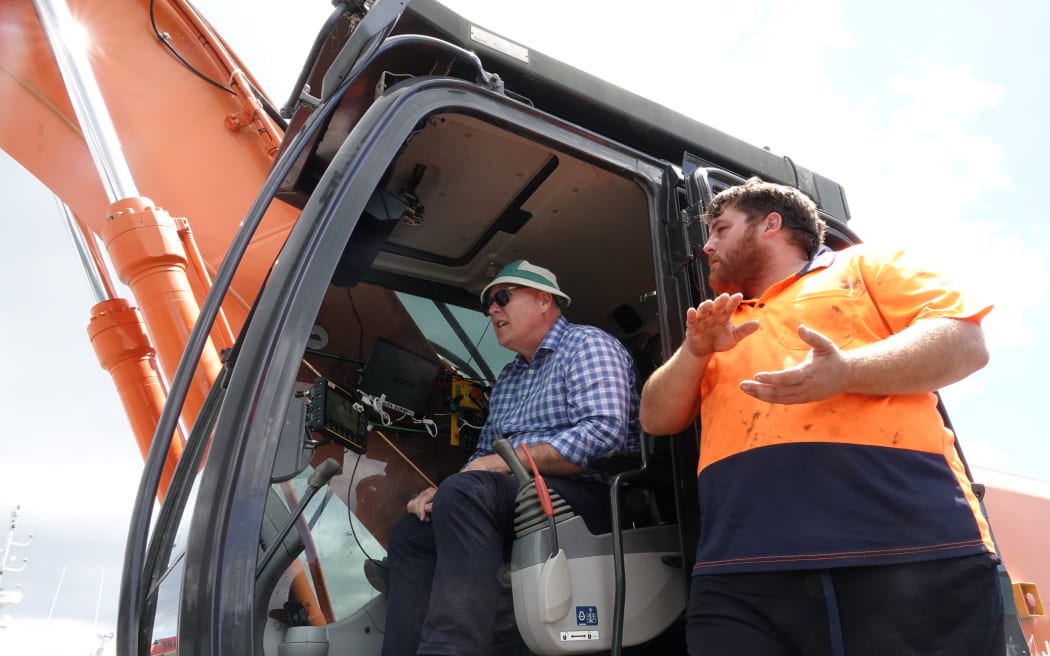
Johnson Brothers founder Andrew Johnson (right) runs through the suction dredge controls with Biosecurity NZ readiness and response director John Walsh. Johnson says it feels good to be part of a local solution to a local problem. Photo: RNZ / Peter de Graaf
Walsh said suction dredging was not new, but the scale of the Bay of Islands trial was.
"The scale of the infestation here is significant. We need something that can remove large volumes of caulerpa, quickly. We've run a suction dredge trial in Aotea Great Barrier that was diver-assisted, which means divers moving the hose around. That probably has some applications for certain conditions but it's slow, and we're hoping this is going to be a heck of a lot faster," he said.
"We were looking for innovation, and these guys have brought really good innovation. They know what they're doing, they're deeply experienced working in the marine environment and in this area in particular, they're locals and they're bringing a real passion to it."
Walsh said he was also impressed by the way the regional council, contractors and local hapū Ngāti Kuta and Patukeha were working together to seek a solution.
Caulerpa was first discovered in the Bay of Islands by Rana Rewha, a Ngāti Kuta kaitiaki, in May 2023.
Rewha said he had been carrying out his usual checks of the shoreline, looking for taonga or koiwi (skeletal remains) after a big storm, when he spotted something unusual.
It was a dense clump of seaweed of a vibrant green he had never seen before.
It was soon identified as the same species of caulerpa already causing serious concern at Aotea Great Barrier.
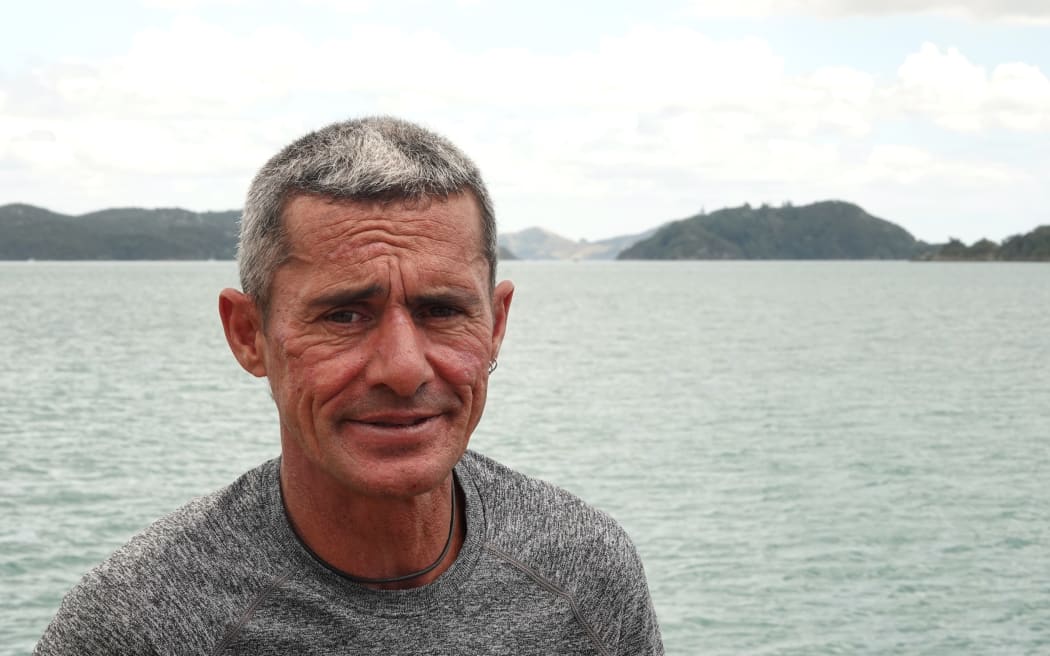
Ngāti Kuta kaitiaki Rana Rewha was the first to discover caulerpa in the Bay of Islands. Photo: RNZ / Peter de Graaf
Since then, Rewha had researched the pest and become a member of the Bay of Islands caulerpa group helping shape the response.
The invasive seaweed was a huge concern for iwi because of its potential effect on food sources such as fish and shellfish, and even people's ability to travel around the bay.
Rewha hoped the suction dredge would make a difference.
"It feels like it's the biggest machine that's actually going to deal with caulerpa at the moment. We've just got to prove it. And then hopefully eradicate it from the whole of New Zealand."
Initial results from the trial should be known later this month.
Currently, about 16ha of caulerpa has been found in the Bay of Islands.
A "closed area notice" imposed last year by Biosecurity NZ prohibits anchoring, fishing and diving in an area of more than 1000ha around Rāwhiti.
The ban is backed up by a rāhui declared by Ngāti Kuta and Patukeha.
